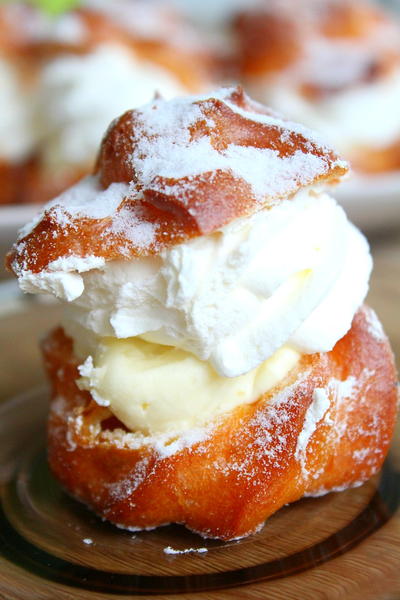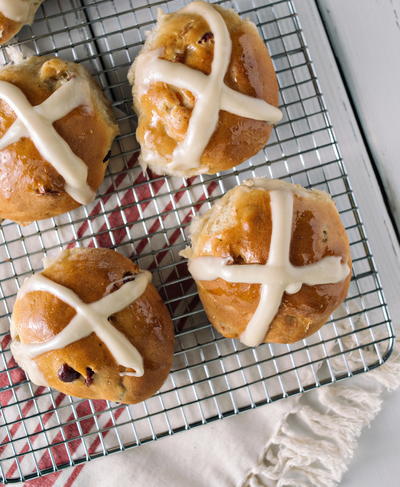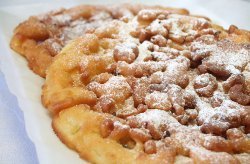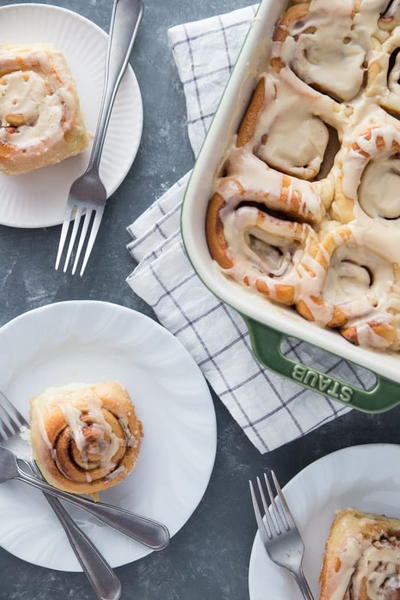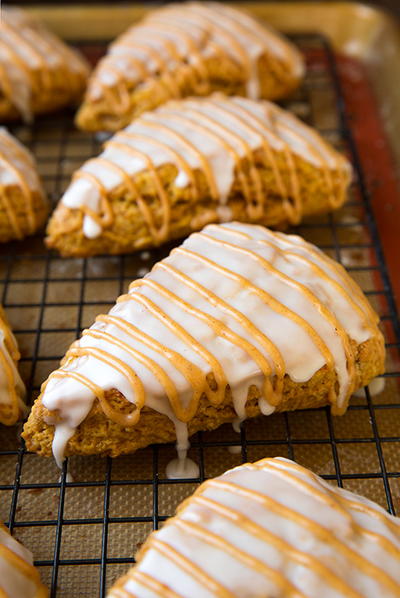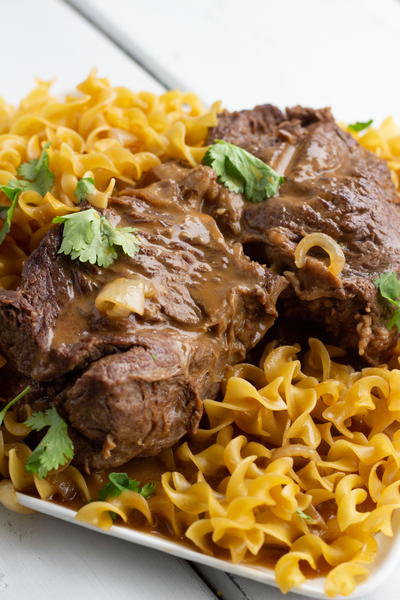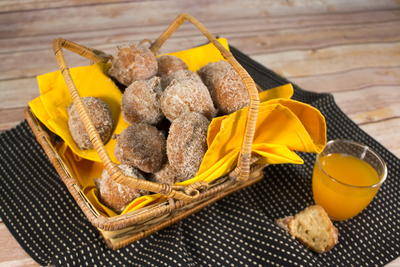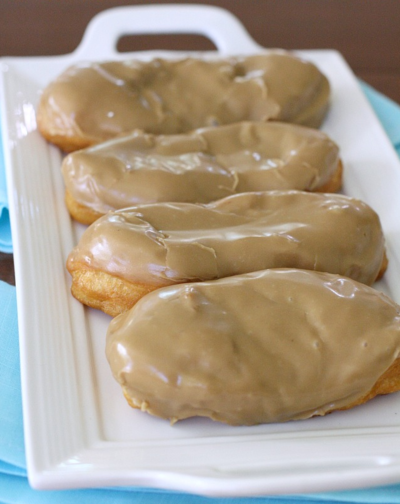Puff Pastry
Ingredients
- 2 1/2 cups unbleached all-purpose flour
- 1 1/4 cup cake flour
- 1 tablespoon salt
- 1 1/4 cup ice water
- 4 sticks (1 pound) very cold unsalted butter
Instructions
Check the capacity of your food processor before you start. If it cannot hold the full quantity of ingredients, make the dough in two batches and combine them. Put the all-purpose flour, cake flour, and salt in the work bowl of a food processor fitted with the metal blade and pulse a couple of times just to mix. Add the water all at once, pulsing until the dough forms a ball on the blade. The dough will be very moist and pliable and will hold together when squeezed between your fingers. Remove the dough from the machine, form it into a ball, and, with a small sharp kinife, slash the top in a tic-tac-toe pattern. [I did this but never figured out what it was for.] Wrap the dough in a damp towel and refrigerate for about 5 minutes. Meanwhile, place the butter between 2 sheets of plastic wrap and beat it with a rolling pin until it flattens into a square that's about 1 inch thick. Take care that the butter remains cool and firm; if it has softened or become oily, chill it before continuing. Incorporating the Butter: Unwrap the dough and place it on a work surface dusted with all-purpose flour. (A cool piece of marble is the ideal surface for puff pastry.) With your rolling pin (preferably a French rolling pin without handles), press on the dough to flatten it and then roll it into a 10-inch square. Keep the top and bottom of the dough well floured to prevent sticking and lift the dough and move it around frequently. Starting from the center of the square, roll out over each corner to create a thick center pad with "ears", or flaps. Place the cold butter in the middle of the dough and fold the ears over the butter, stretching them as needed so that they overlap slightly and encase the butter completely. (If you have to stretch the dough, stretch it from all over - don't just pull the ends.) You should now have a package that is about 8 inches square. To make great puff pastry, it is important to keep the dough cold at all times. There are specified times for chilling the dough, but if your room is warm, or you work slowly, or you find that for no particular reason the butter starts to ooze out of the patry, cover the dough with plastic wrap and refrigerate it. Gently but firmly press the rolling pin against the top and bottom edges of the square (this will help to keep it square). Then, keeping the work surface and the top of the dough well floured to prevent sticking, roll the dough into a rectangle that is three times as long as the square you started with, about 24 inches. (Don't worry about the width of the rectangle; if you get the 24 inches, everything else will work itself out.) With this first roll, it is particularly important that the butter be rolled evenly along the length and width of the rectangle; check when you start rolling that the butter is moving along well, and roll a bit harder or more evenly, if necessary, to get a smooth, even dough- butter sandwich. With a pastry brush, brush off the excess flour from the top of the dough, and fold the rectangle up from the bottom and down from the top in thirds, like a business letter, brushing off the excess flour. You have completed one turn. Rotate the dough so that the closed fold is to your left, like the spine of a book. Repeat the rolling and folding process, rolling the dough to a length of 24 inches and then folding it in thirds. This is the second turn. If the dough is still cool and no butter is oozing out, you can give the dough another two turns now. If the condition of the dough is iffy, wrap it in plastic wrap and refrigerate it for at least 30 minutes. Each time you refrigerate the dough, mark the number of turns you've completed by indenting the dough with your fingertips. It is best to refrigerate the dough for 30 to 60 minutes between each set of two turns. The total number of turns needed is six. If you prefer, you can give the dough just four turns now, chill it overnight, and do the last two turns the next day. Puff pastry is extremely flexible in this regard. However, no matter how you arrange the schedule, you should plan to chill the dough for at least an hour before cutting or shaping it.

